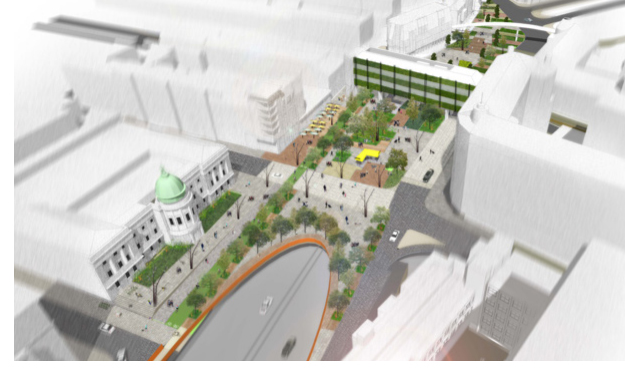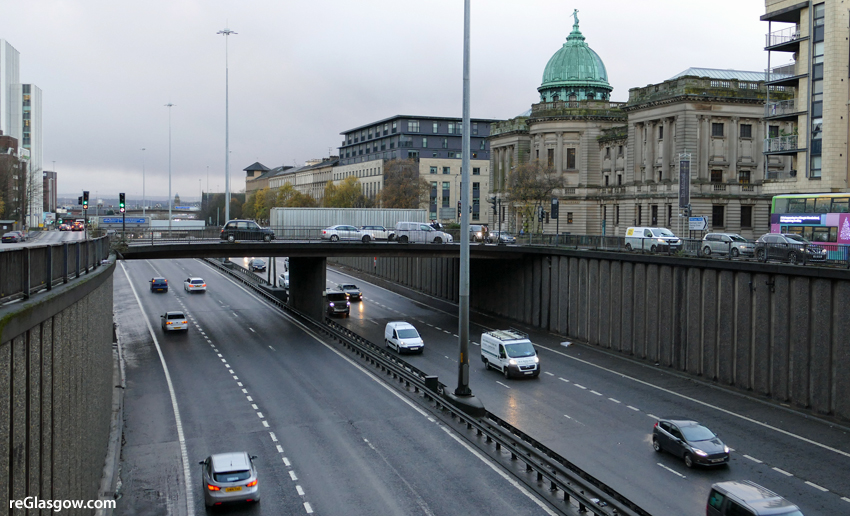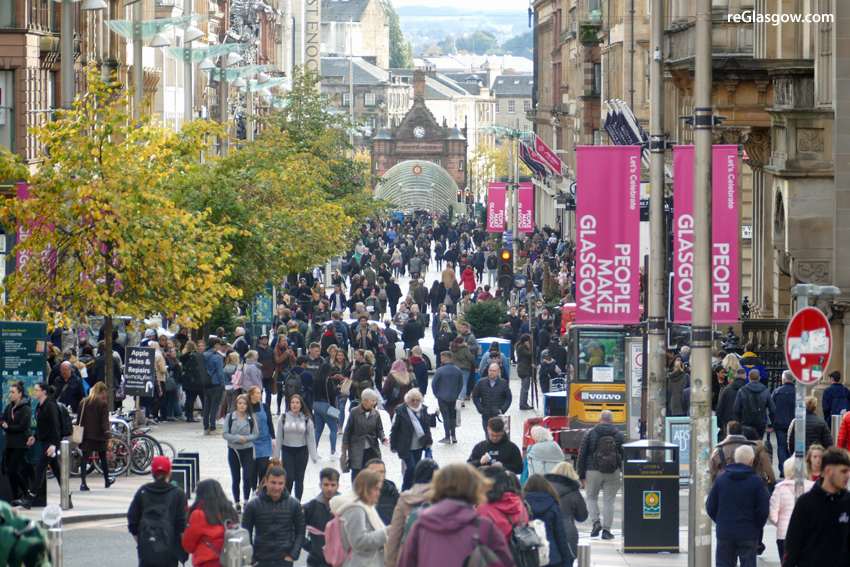A MAJOR study into how Glasgow can be a more connected is urging that people be put first in the city centre not traffic and that the council should press ahead with major projects such as putting a roof over the M8 at Charing Cross.
The Connectivity Commission was set up as an independent body by the city council last year. In a report released this week it recommended that Glasgow City Council “prioritises the movement of people, cyclists, public transport use and private vehicles, in that order”.
The commission’s chairman, professor David Begg, writes in the report: “Along with other successful major cities, Glasgow is facing the key urban challenge of our times –- how to re-purpose transport networks built for the unsustainable, high carbon economy in order to prioritise pedestrians and create attractive, people-centred places supporting thriving populations in a clean and healthy city centre environment.
“As Glasgow has such a disproportionately high amount of its city centre space devoted to roads and parking, Glasgow City Council can make a large impact even with its limited powers to act.
“Glasgow can re-balance its use of street space, reallocating roads dedicated to traffic, allowing the city centre to breathe, and creating spaces where people do not want to simply visit and pass through but spend time.”
He added: “The city has shown how to get more people walking, cycling and able to linger in a cleaner, more pleasant environment. Pedestrian-friendly streets linking active places and usable spaces, where people safely enjoy a range of activities, can give Glasgow a more cosmopolitan feel.
“In step with an increasing number of global cities, Glasgow has begun to re-balance the use of its streetscape through its Avenues project, its award-winning cycling programmes and the recently announced quality bus partnership. These are laudable initiatives which, together with the introduction of Scotland’s first Low Emission Zone will help create an agile, connected, liveable city.
“But they are not enough. Tough, strategic decisions about the priorities in how we use limited land space are now required if Glasgow’s potential is to be fulfilled.”
“We know that, when space has been given back to people, Glasgow has flourished. The last significant shift away from traffic to trade in the 1970s helped to turn Buchanan Street into one of the world’s greatest streets and helped push Glasgow to become the UK’s second most popular retail destination.”
The commission’s recommendations include:
— The acceleration of the Avenues project and its extension into other parts of the city centre such as George Square, Argyle Street, Cathedral Street and High Street
 — Glasgow City Council should press ahead with plans to build a roof over the M8 at Charing Cross, creating a new pedestrian space outside the Mitchell Library (See image right of how the roof might look)
— Glasgow City Council should press ahead with plans to build a roof over the M8 at Charing Cross, creating a new pedestrian space outside the Mitchell Library (See image right of how the roof might look)
— Changing the “inefficient” city centre grid system so that the traffic network was provided around super-blocks rather than the current smaller blocks.
— The completion of a network of safe, high quality, segregated cycling arterial routes connecting the city centre to suburbs and peripheral neighbourhoods
— The creation of safe, high quality, segregated cycling corridors through the city centre which connect to the arterial routes, undertaken as part of changing Glasgow’s road grid
— A partnership between Glasgow City Council and taxi associations to improve service standards and better strategic placement of taxi ranks
— Accelerating bus journey times through the rapid roll-out of bus priority measures, reducing dwell times at bus stops and better enforcement of bus lanes
— Half-price bus fares for apprentices and the under-19s
— Re-locating on-street parking to under-utilised car parks



